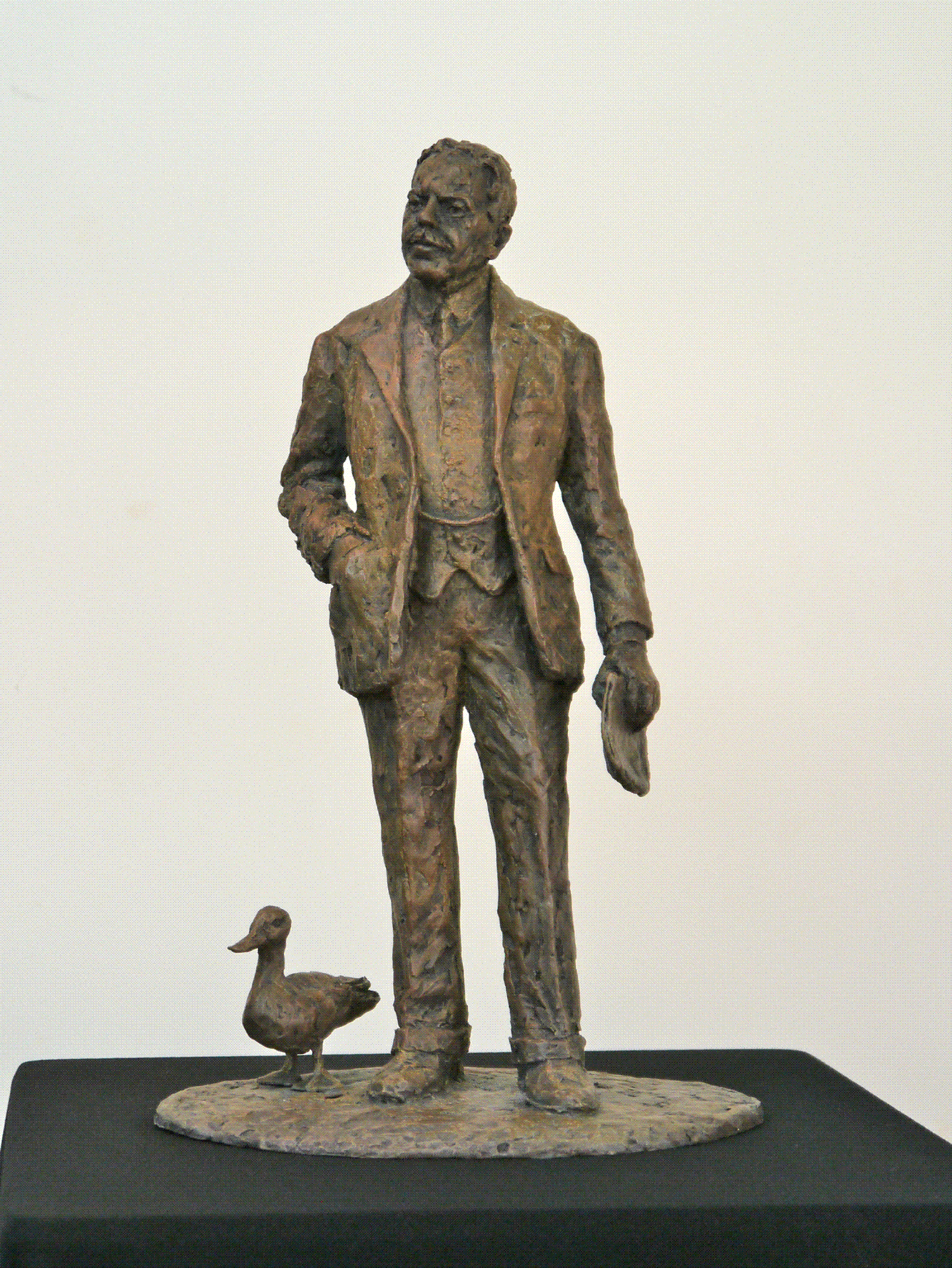 Stuart Nathan
Stuart Nathan
Features Editor
It's time to reinstate the bronze duck at the feet of the statue of Mallard designer Sir Nigel Gresley. It says something important about engineers.
Today I want to talk about ducks.
If readers were to head down to London’s King’s Cross Station they might be in for a big surprise. No, it’s not a teddy bear’s picnic; if it’s teddy bears you want, go to Paddington. But if you haven’t been to King’s Cross for a while, it’s changed rather a lot. No longer the dingy, dodgy, cramped forecourt of old; there’s now a soaring lattice canopy of tessellated triangular glass panels; the handsome old frontage has been restored; and beneath the new canopy is a spacious, airy space where you can wait for your train, have a coffee or a sandwich, and generally unwind.
There are also a few curious touches. You’ll see people in an archaic-looking school uniform; Harry Potter fans looking for the mythical Platform nine-and-three-quarters. What they’re looking for is a luggage trolley embedded in a wall, its basket often filled with flowers in tribute to the late Alan Rickman.

You’ll also find a rather unassuming statue of a middle-aged man with a moustache. Slightly larger than life-size and cast in bronze, it stands with one hand in its jacket pocket and the other clutching a folio. And if you glance down to its feet, near its sensible lace-up shoes you’re likely to see a small family of plastic bath ducks.
This statue depicts Sir Nigel Gresley, the former chief engineer of the London and Northeastern Railway (LNER) and celebrated designer of locomotives. Why are there ducks at his feet? The original design of the statue included a bronze duck, referring to two things: Gresley was fond of waterfowl and bred them as a hobby, which led to him naming his most famous locomotive after them – the record-breaking Mallard. The duck was intended to spark the curiosity of young visitors to the station and encourage them to ask questions, perhaps contributing to their knowledge of engineering.
However, Gresley’s grandsons objected to the avian inclusion, thinking it demeaning. The Gresley Society, which commissioned the statue, went along with their wishes and removed the duck. Some sections of the British public, appreciating the air of whimsy which is so characteristic to Britain and which is so confusing and irritating to both our neighbours and the humourless, are objecting to this decision by adding their own rubber duckies.
As readers might infer from the above, I’m in favour of the duck. While the statue (the work of sculptor Hazel Reeves) is a fine likeness of Gresley, it’s a bloke in a suit. And quite rightly too; this isn’t the Victorian era and we don’t go in for overblown heroic statuary anymore. But a bronze statue, much the same colour as the wall it stands by, needs something distinctive to mark it out; not everybody reads plaques (though I do, which often annoys my companions who wonder why I’ve stopped dead in my tracks) and Gresley isn’t even placed on a podium.
Of course the best memorial to Gresley is his work; the great, gleaming streamlined steel, chrome and brass bulk of the Mallard itself. But that, again quite rightly, is elsewhere, in the National Rail Museum in York, where it can be admired in the context of its development from more traditional locomotives (including one of Gresley’s other great designs, the Flying Scotsman). Maybe a bronze relief frieze of the Mallard and the Scotsman blazing along at full steam could have been cast and placed behind the Gresley statue. But the bronze duck was a lovely touch to the original design; it’s modest, admittedly unheroic, but appealingly whimsical and actually relevant: the man liked ducks, for heaven’s sake. And it’s a reminder of his best-known work in an appealingly cryptic fashion.
While the family’s wishes must of course be considered, it’s hard to see how our feathered friend can be seen as demeaning. It humanises Gresley and reminds us that engineers are ordinary people with interests – not remote and obsessive geniuses consumed by their work. Classical portraitists would always include personal touches of their sitters to help convey their characters and Gresley’s duck is in this tradition. Moreover, it helps to give the message that anyone can be an engineer: you don’t have to dress funny and you can retain your character quirks. And a noble bronze duck is surely less demeaning than a puddle of lurid yellow rubber duckies.





Poll: Should the UK’s railways be renationalised?
The term innovation is bandied about in relation to rail almost as a mantra. Everything has to be innovative. There is precious little evidence of...